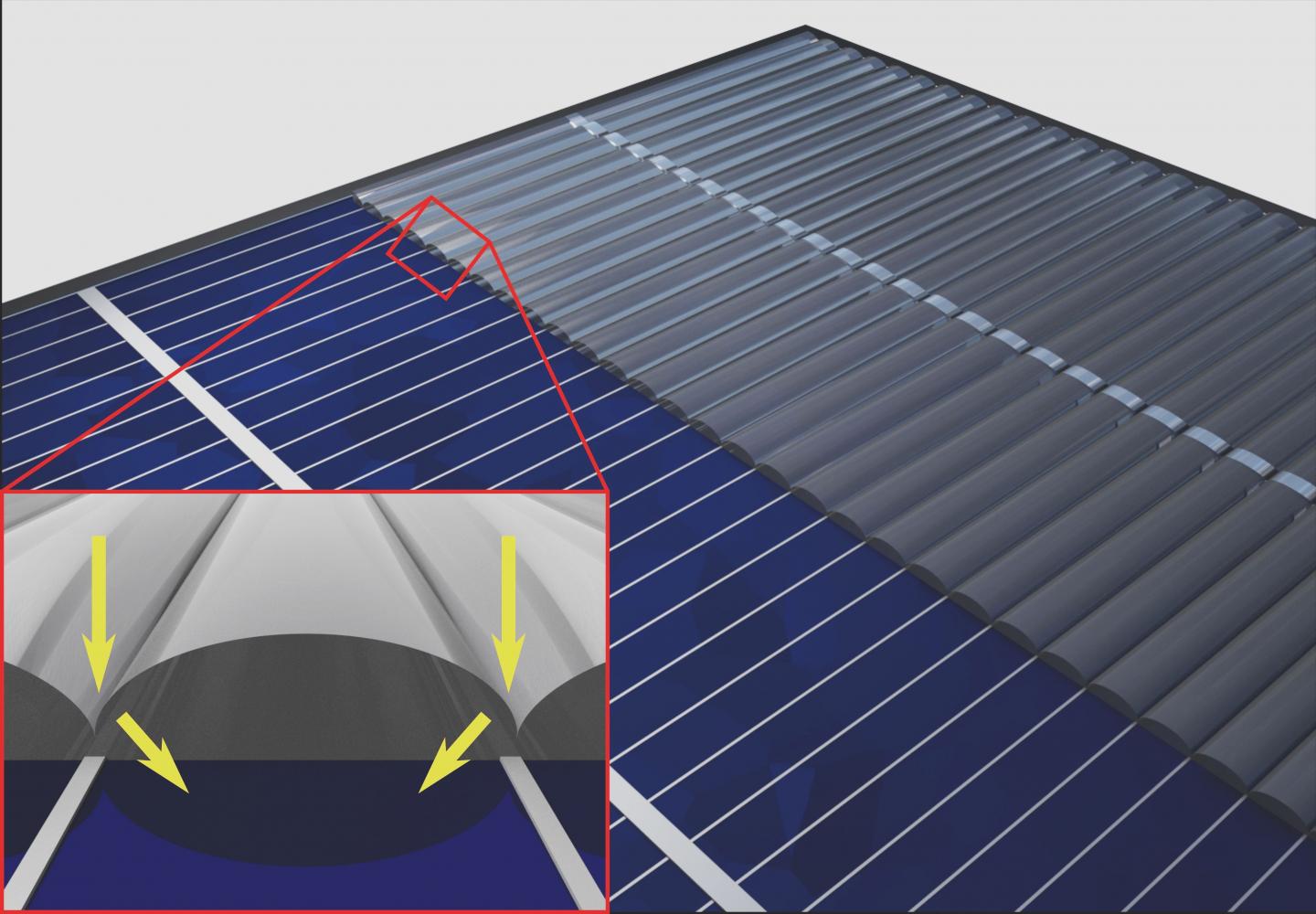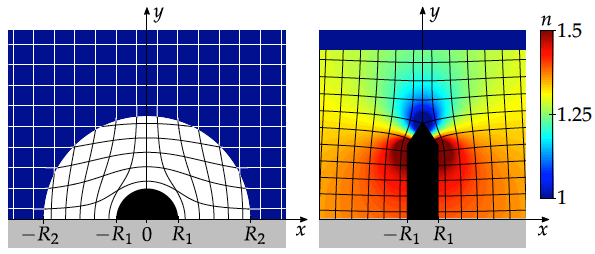Invisibility cloak may enhance efficiency of solar cells
October 1, 2015

A special invisibility cloak redirects sunlight past solar-cell contacts to the active surface area of the solar cell (credit: Martin Schumann/KIT)
A new approach to increasing solar-cell panel efficiency using an “invisibility cloak” has been developed by scientists at Karlsruhe Institute of Technology (KIT) in Germany.
Up to one tenth of the surface area of solar cells is typically covered by “contact fingers” that extract current generated by solar cells. The fingers block some of the light from the active area of the solar cell, decreasing cell efficiency. By guiding the incident light around the contact fingers, the cloak layer makes the contact fingers nearly completely invisible, according to doctoral student Martin Schumann of the KIT Institute of Applied Physics, who conducted the experiments and simulations.

Coordinate transformations enabling invisible contacts on solar cells. The elongated metal contact can be arbitrarily shaped within the black region to make it invisible. (credit: Martin F. Schumann et al./Optica)
To achieve the cloaking effect, the scientists applied a polymer coating onto the solar cell and added a groove along the contact fingers, both helping to refract incident light away from the contact fingers and toward the active surface area of the solar cell. They expect an efficiency increase of 10 percent in followup tests.
The research was published Sept. 25 in an open-access article in the journal Optica.
Abstract of Cloaked contact grids on solar cells by coordinate transformations: designs and prototypes
Nontransparent contact fingers on the sun-facing side of solar cells represent optically dead regions which reduce the energy conversion per area. We consider two approaches for guiding the incident light around the contacts onto the active area. The first approach uses graded-index metamaterials designed by two-dimensional Schwarz–Christoffel conformal maps, and the second uses freeform surfaces designed by one-dimensional coordinate transformations of a point to an interval. We provide proof-of-principle demonstrators using direct laser writing of polymer structures on silicon wafers with opaque contacts. Freeform surfaces are amenable to mass fabrication and allow for complete recovery of the shadowing effect for all relevant incidence angles.